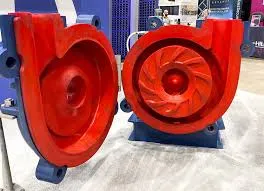English
- Afrikaans
- Albanian
- Amharic
- Arabic
- Armenian
- Azerbaijani
- Basque
- Belarusian
- Bengali
- Bosnian
- Bulgarian
- Catalan
- Cebuano
- Corsican
- Croatian
- Czech
- Danish
- Dutch
- English
- Esperanto
- Estonian
- Finnish
- French
- Frisian
- Galician
- Georgian
- German
- Greek
- Gujarati
- Haitian Creole
- hausa
- hawaiian
- Hebrew
- Hindi
- Miao
- Hungarian
- Icelandic
- igbo
- Indonesian
- irish
- Italian
- Japanese
- Javanese
- Kannada
- kazakh
- Khmer
- Rwandese
- Korean
- Kurdish
- Kyrgyz
- Lao
- Latin
- Latvian
- Lithuanian
- Luxembourgish
- Macedonian
- Malgashi
- Malay
- Malayalam
- Maltese
- Maori
- Marathi
- Mongolian
- Myanmar
- Nepali
- Norwegian
- Norwegian
- Occitan
- Pashto
- Persian
- Polish
- Portuguese
- Punjabi
- Romanian
- Russian
- Samoan
- Scottish Gaelic
- Serbian
- Sesotho
- Shona
- Sindhi
- Sinhala
- Slovak
- Slovenian
- Somali
- Spanish
- Sundanese
- Swahili
- Swedish
- Tagalog
- Tajik
- Tamil
- Tatar
- Telugu
- Thai
- Turkish
- Turkmen
- Ukrainian
- Urdu
- Uighur
- Uzbek
- Vietnamese
- Welsh
- Bantu
- Yiddish
- Yoruba
- Zulu
Telephone: +86 13120555503
Email: frank@cypump.com
Nov . 10, 2024 02:35 Back to list
Understanding the Functionality and Benefits of Sewer Ejection Pumps for Efficient Waste Management
Understanding Sewer Ejection Pumps
Sewer ejection pumps play a critical role in managing wastewater in residential and commercial settings. These pumps are designed to move wastewater from lower levels of a building to a higher elevation, ensuring it can reach the main sewer line or septic system effectively. This article will delve into the operational mechanisms, types, and considerations surrounding sewer ejection pumps.
What is a Sewer Ejection Pump?
A sewer ejection pump is a specific type of wastewater pump that is employed in situations where gravity cannot assist in moving sewage efficiently. This can occur in buildings that are situated below the municipal sewer line, which necessitates the need for an ejection pump to propel the wastewater upwards. Ejection pumps are typically installed in basements or lower levels of a property, where they can collect sewage and discharge it into the sewer line or septic system.
How Do Ejection Pumps Work?
Ejection pumps operate using a straightforward mechanism. Wastewater enters the pump through an inlet, where it is accumulated in a basin. Once the water level reaches a pre-determined point, a float switch is activated, signaling the pump to start. The pump then forces the wastewater through an outlet pipe to a higher elevation.
The pumps are equipped with impellers that create a centrifugal force, allowing them to handle not only liquids but also solids, such as toilet paper and food waste. This capability is crucial, as it ensures that clogs do not occur, which can lead to backups and other plumbing issues.
Types of Ejection Pumps
There are several types of sewer ejection pumps available, each designed for specific applications
1. Submersible Pumps These pumps are designed to operate underwater, making them ideal for basement installations. Their design allows them to be submerged in the sewage basin, keeping them out of sight and minimizing noise.
sewer ejection pump

2. Effluent Pumps Unlike ejection pumps, effluent pumps are used to move non-solid water, often in applications related to septic systems. They are effective for greywater applications and tend to have a submersible design as well.
3. Grinder Pumps These pumps feature additional grinding mechanisms that reduce solids into smaller pieces, which allows for easier transport through the piping system. Grinder pumps are particularly beneficial in scenarios where the sewage contains larger solids.
Considerations When Installing an Ejection Pump
When planning to install a sewer ejection pump, several considerations come into play
- Location The pump needs to be strategically placed in a location where it can effectively collect wastewater and discharge it without obstruction.
- Pump Size and Capacity Selecting the right size and capacity of the pump is vital to ensure it can handle the volume of wastewater generated by the household or building. An undersized pump can lead to frequent breakdowns and inefficiency.
- Power Supply Ejection pumps require electricity to function. Ensuring a reliable power source and considering backup systems, such as generators, is important to avoid pump failure during power outages.
- Maintenance Regular maintenance is essential to keep the pump running efficiently. Homeowners should establish a routine inspection schedule to check for clogs and wear-and-tear on the components.
Conclusion
Sewer ejection pumps are indispensable for managing wastewater in properties located below the main sewer line. Their ability to handle both liquids and solids ensures that sewage is efficiently transported away from the property, preventing unpleasant backups and health hazards. By understanding the different types of pumps and their mechanisms, property owners can make informed decisions regarding the installation and maintenance of these essential devices. With proper care and prompt attention to any issues, sewer ejection pumps can offer long-term reliability and peace of mind.
-
Horizontal Split Case Pump with GPT-4 Turbo | High Efficiency
NewsAug.01,2025
-
ISG Series Pipeline Pump - Chi Yuan Pumps | High Efficiency, Durable Design
NewsAug.01,2025
-
Advanced Flue Gas Desulfurization Pump with GPT-4 Turbo | Durable & Efficient
NewsJul.31,2025
-
ISG Series Vertical Pipeline Pump - Chi Yuan Pumps | Advanced Hydraulic Design&Durable Construction
NewsJul.31,2025
-
ISG Series Vertical Pipeline Pump - Chi Yuan Pumps | Energy Efficient & Low Noise
NewsJul.31,2025
-
pipeline pump - Chi Yuan Pumps Co., LTD.|High Efficiency&Low Noise
NewsJul.31,2025










